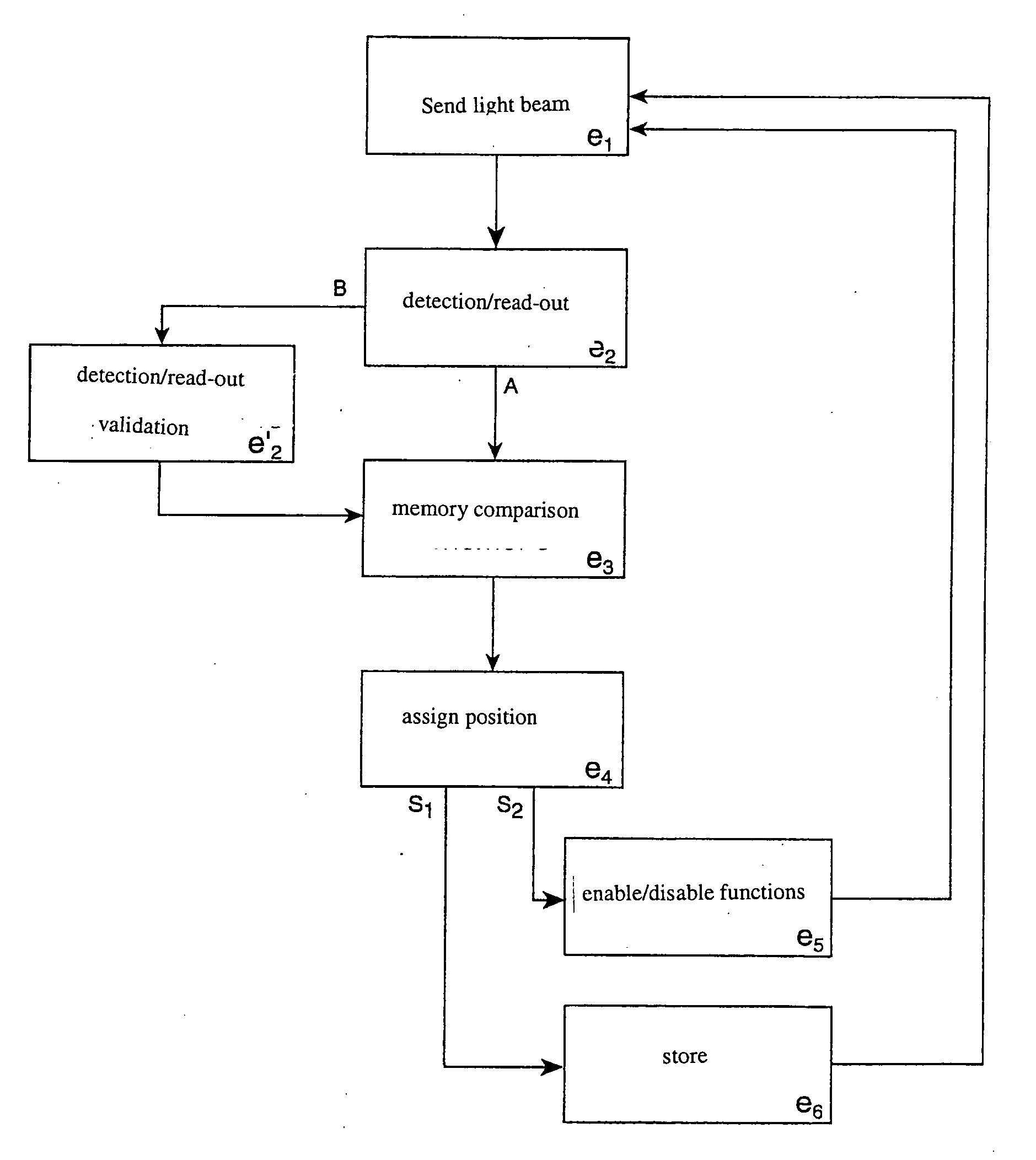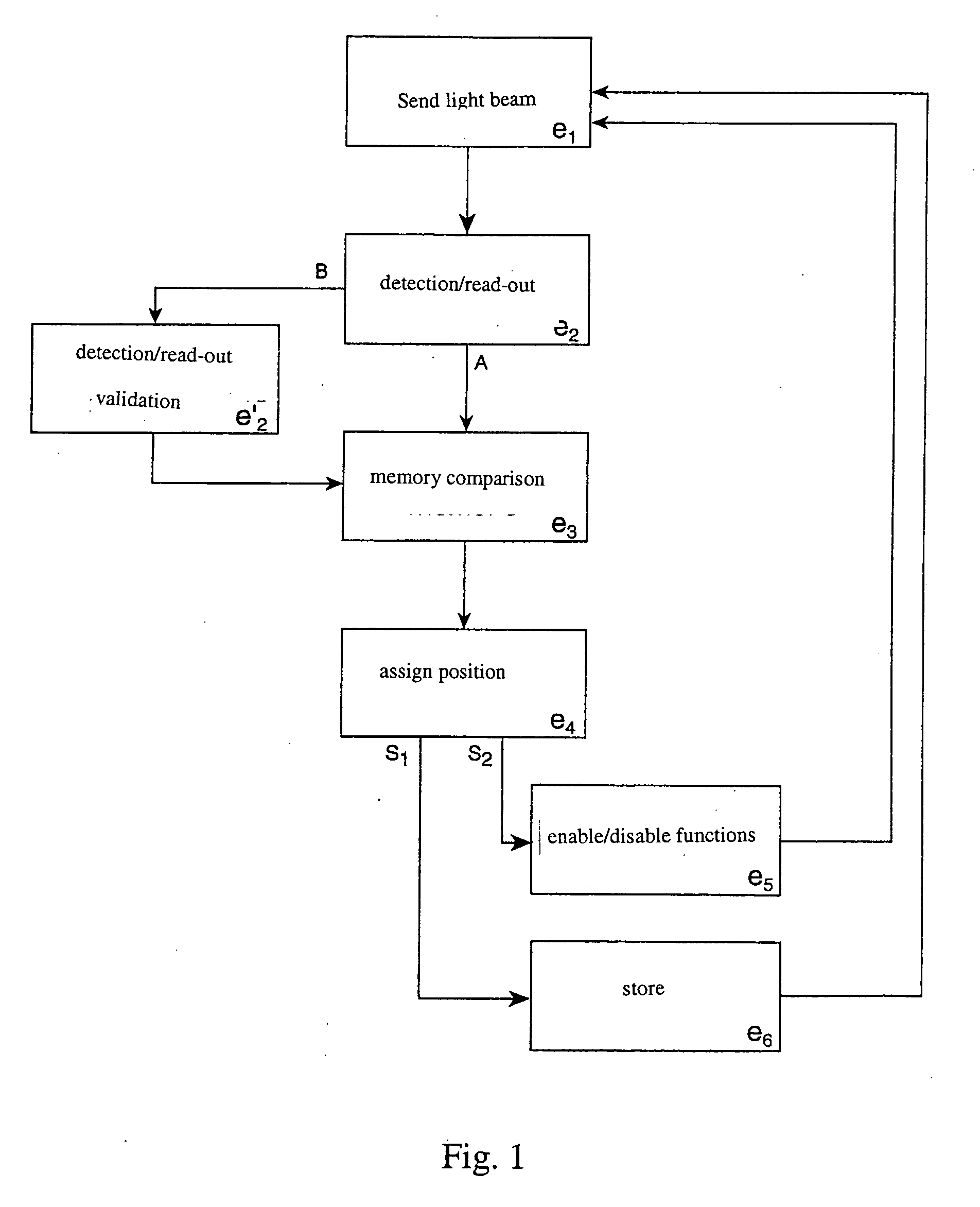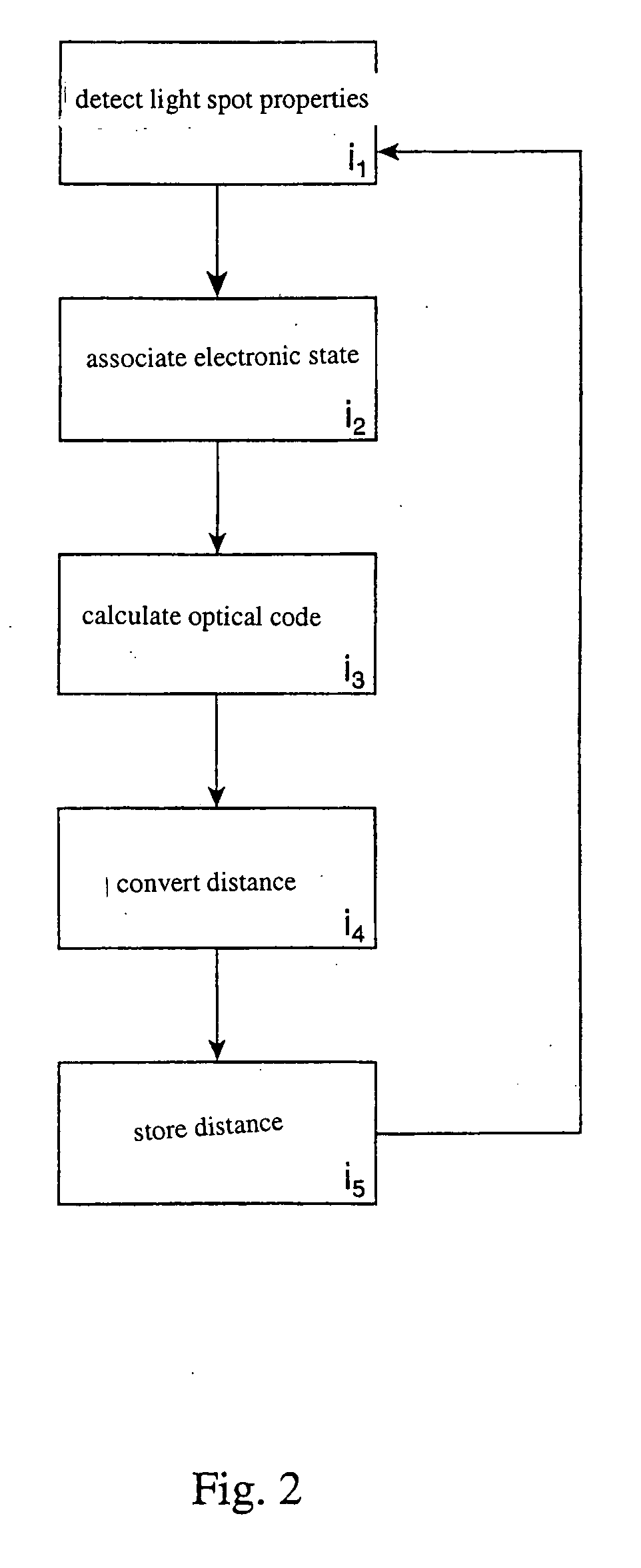Method for determining the position of a first moving component relatively to a second component and device for applying said method
- Summary
- Abstract
- Description
- Claims
- Application Information
AI Technical Summary
Benefits of technology
Problems solved by technology
Method used
Image
Examples
Embodiment Construction
[0090] The present invention relates to a method for determining the position of one of two components in relative motion to each other. The method uses optical means. For example an exemplary functional flow chart is schematized in FIG. 1.
[0091] The method according to the invention according to step (e1) consists of directing at least one light ray emitted by a light source onto a diffractive support (1) provided for generating an optical signal. The latter is indicative of the positioning of the support relatively to a fixed mark. The optical signal is produced by the diffracted support (4) by transmission and / or by reflection.
[0092] According to a following step (e2), the method consists of detecting and reading at least one constituent optical code of the signal. This diffracted signal corresponds to a unique position of the diffractive support (1). The optical code according to step (e3) is then compared via a memory table with prerecorded data corresponding to positions. Wi...
PUM
 Login to View More
Login to View More Abstract
Description
Claims
Application Information
 Login to View More
Login to View More - R&D
- Intellectual Property
- Life Sciences
- Materials
- Tech Scout
- Unparalleled Data Quality
- Higher Quality Content
- 60% Fewer Hallucinations
Browse by: Latest US Patents, China's latest patents, Technical Efficacy Thesaurus, Application Domain, Technology Topic, Popular Technical Reports.
© 2025 PatSnap. All rights reserved.Legal|Privacy policy|Modern Slavery Act Transparency Statement|Sitemap|About US| Contact US: help@patsnap.com



